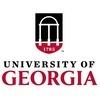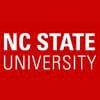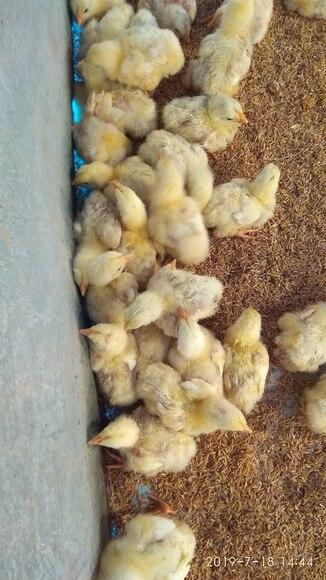Explore all the information on
Poultry welfare
Proper animal welfare involves providing the proper housing, management, nutrition, disease prevention and treatment, responsible care, humane handling and, when necessary, humane euthanasia. These factors allow for the most optimal and humane growing environment. The concept of animal welfare includes three elements: the bird’s normal biological functioning, its emotional state and its ability to express its natural behaviors. Improving animal welfare can be accomplished through offerings like poultry feed enrichment, which can reduce stress, thereby increasing performance, productivity and profitability. Animal welfare is currently a major requirement for intensive poultry production. Beak trimming, stocking density, free access to feed, heat stress, and air pollutants became important issues, which are regulated in several countries. Animal welfare is observed by watching how birds naturally behave and even by looking at mortality stemming from aggressive behaviors.
INTRODUCTION It has been reported that the low locomotor activity of broilers coupled to their high initial growth rate of broilers results in leg problems and gait abnormalities. Long times spent sitting on wet litter may cause breast and leg skin lesions, which may contribute for the deterioration of the flock well-being (McGeown et al., 1999; Vestergaard & Sanotra, 1999; Weeks et al., 2000; Bokkers & Koene, 2004; Bessei, 2006). A causal interrelationship between the...
Comments : 1
Recommendations: 0
During the summertime, most broiler producers would not consider a house temperature in the low 80's of particular concern, even with a house full of near-market-age birds. But in truth they should be. Because without sufficient air speed, the...
Comments : 0
Recommendations: 3


Reduced crude protein diets maintains growth and yield parameters of mixed-sex broilers while reducing nitrogen excretion
Suggested link
Sanjay Shah (NC State University) discussed indoor air quality and the use of alternative materials to reduce heating costs, during IPPE 2019 in Atlanta, USA....
Comments : 15
Recommendations: 3
Heat stress (HS) is devastating to poultry production sustainability from its adverse effects on bird welfare, health, growth, and mortality. Although modern broilers have greater gut mass and higher energy use efficiency than unselected birds, they are more vulnerable to HS that induces leaky gut syndrome. The aim of the present study was, therefore, to determine the effect of HS on gut barrier integrity in 3 modern broilers and in their ancestor Jungle Fowl. Four chicken populations:...
Comments : 0
Recommendations: 3
Introduction Chronic heat stress (HS) is a great concern in all types of poultry especially broiler chickens. Reductions of feed intake (Teeter ., 1985) and lower growth rate as well as reduction in feed efficiency (Geraert ., 1996) have been reported in poultry under HS condition (Ramnath., 2008). Birds attempt to compensate for their reduced ability to dissipate heat during heat distress by increasing their physiological processes (such as, elevated body temperature, panting...
Comments : 1
Recommendations: 0
Background Salmonella is a major food borne pathogen which globally is estimated to cause 93 million enteric infections and 155,000 diarrheal deaths each year [1]. Poultry products are a significant source which initially was considered to be a consequence of the global introduction of industrialized production of broiler chickens around some 50 years ago [2]. In the late 1980s, the emerging and pandemic spread of Salmonella Enteritidis primarily via table eggs also...
Comments : 6
Recommendations: 2
Deposits of years around joints i.e. those of feets Left being normal and right being characterised by tophi ...
Comments : 4
Recommendations: 0
What is the major reason fo low feed consumption and lameness. Any difficiency daminate this. Here attached few of the pictures and videos...
Comments : 1
Recommendations: 0
Introduction Heat stress is one of the major problems of poultry in heat areas of the world including Iran, especially in summer, leading to reduced performance, the production, feed intake, growth rates and effective use of the feed (Sahin ., 2009). In general, birds have a thermal comfort zone, which ranges between 18 to 22 ° C and no problem for the physiological regulation of body temperature in this range will. Birds lack sweat glands, increase in...
Comments : 11
Recommendations: 1
Silvafeed® plant extracts: a performing natural alternative to antibiotics in maximising gut health Implementing new practices that aim at improving animal welfare is no easy task. There are diverse signals from famers and veterinarians that, under the condition of current animal farming, livestock welfare appears endangered, as individual animals and entire flocks or herds show clinical signs of discomfort and...
Comments : 2
Recommendations: 1
Figure 1. Air speeds in fifteen locations across the cross-section of a 40' X 500' broiler house with market-age birds. Keeping market-age birds cool during hot weather is all about...
Comments : 15
Recommendations: 2
Michael Czarick (Extension Engineer – University of Georgia, Department of Poultry Science) will be one of the speakers at the Latin American Poultry Congress that will take place in Lima, Peru, from October 9th to the 11th.
He is considered by the academic community as the principal authority in the design and operation of...
Comments : 0
Recommendations: 0
During the summertime, most broiler producers would not consider a house temperature in the low 80's of particular concern, even with a house full of near-market-age birds. But in truth they should be. Because without sufficient air speed, the use of...
Comments : 0
Recommendations: 6
What is the major reason for low feed consumption and lameness? ...
Comments : 0
Recommendations: 0
Thanks in advance, my question is how to control moisture in poultry farm, shade in Pakistan I've tried many things but unable to control. Can you guide me? I'm very thankful. ...
Comments : 0
Recommendations: 0
Various environmental stressors such as high ambient temperature and relative humidity influence the performance of broilers by reducing feed intake, feed conversion efficiency and hypophyseal-adrenocortical axis that in turn stimulates corticosterone which retarded growth (Dong et al., 2007). Reactive oxygen species (ROS) are generated at cellular level during normal bodily functions; however, high ambient temperature has been shown to increase the free radicals and other ROS production in...
Comments : 0
Recommendations: 0
1. Introduction Newcastle disease is considered the number one disease constraint to poultry production in low and middle-income countries [1]. In these areas, chickens often serve as important protein sources and commodities to be sold or traded. Pathogens are not the only challenge in small-scale poultry production in these resource-limited settings. Heat stress also has a negative impact [2]. Immune response is known to be negatively modulated by heat stress...
Comments : 0
Recommendations: 0
Introduction The effects of thermal stress (TS) on chickens have been widely explored due to their relation to economic losses and animal performance retardation. Modern broiler chickens strains have greater sensitive to high temperature than old strain (1). A high temperature is one of the major stressors linked to economic losses to the poultry industry (2). It causes bad growth performance (3), immune depression (4), and high fatal rate (5). The optimum living temperature of...
Comments : 0
Recommendations: 0


Reduced crude protein diets maintains growth and yield parameters of mixed-sex broilers while reducing nitrogen excretion
Suggested link
1. Introduction Market broilers face a variety of stresses, including feed and water withdrawal, vehicle vibration, and noise during live hauls from farms to processing plants. Among these, complex thermal environments have been identified as a major factor inducing physiological stress [1–9], with the most stressful stimuli being the extremes of heat and cold, contributing to seasonal-elevated “dead on arrivals” (DOAs). The welfare of the birds may be...
Comments : 0
Recommendations: 0
Introduction Room temperature is a component of microclimate and has a significant effect on the productivity, health of broiler chickens and consequently on the profitability of poultry production. It is generally assumed that rearing temperature should be approximately 32°C on the first day and be gradually decreased to approximately 20°C at the 6 weeks of age (Leenstra and Cahaner, 1991; Zhou and Yamamoto, 1998). Too low or too high ambient temperature is highly...
Comments : 0
Recommendations: 1





.jpg&w=3840&q=75)










.jpg&w=3840&q=75)

.jpg&w=3840&q=75)













